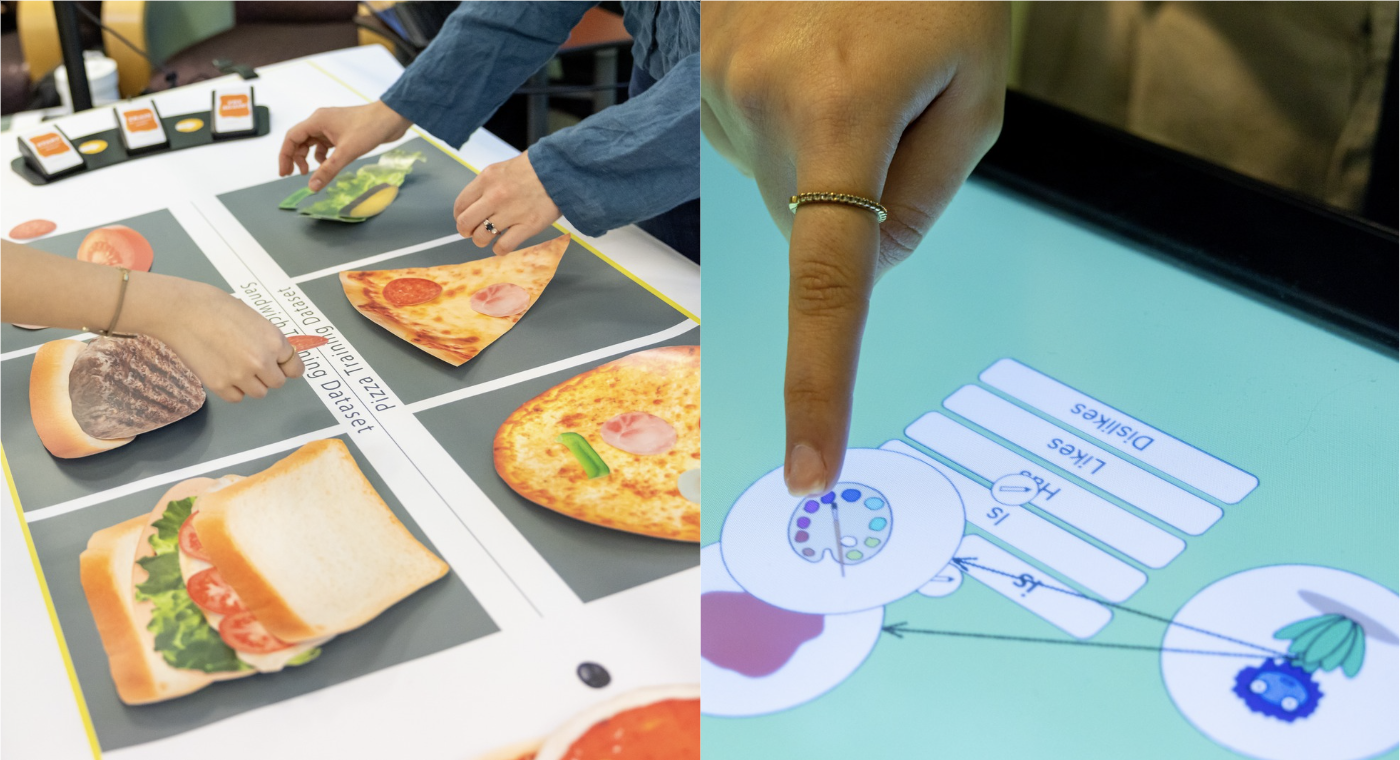Museum Exhibit Design for AI Literacy
Role: Signage Content Designer
At the Creative Interfaces Research + Design Studio at Northwestern, I contribute to designing two interactive museum exhibits aimed at fostering AI literacy in children. I work on creating signage, informational posters, and engagement prompts that bridges the gap between complex AI concepts and the diverse needs of museum visitors, while maintaining engaging interactions.
Knowledge Net introduces visitors to the concept of knowledge representation in AI, visualizing how AI systems connect and organize information. DataBites involves a hands-on activity that explores the basics of machine learning by allowing visitors to create datasets, teaching them how AI uses patterns to make decisions.
In May 2024, we conducted user research studies at the Museum of Science and Industry in Chicago, where I gathered valuable insights from visitors to inform future signage iterations.
Designing Signage for Interactive Learning
Exhibit Posters
Informational posters designed primarily for parents and guardians to read while their children engaged with exhibits. These posters simplify technical AI concepts, such as knowledge representation, dataset, and machine learning, into digestible narratives with real-world examples.
Activity and Engagement Prompts
Circle-shaped signage placed strategically near exhibits to inspire children with interactive questions or fun challenges. These prompts encourage children to think more critically about the AI concepts they are grasping, without disrupting their active engagment with the exhibits.
Take-Home Flyers
Smaller, portable flyers crafted for families to take home, offering continued engagement with the exhibit's themes and reinforcing learning long after the visit.
For a future iteration, I am co-designing a take-home postcard for children who create their own character in the Knowledge Net exhibit.
Bringing a Learning Sciences Perspective
Refining Learning Outcomes
I periodically update our learning outcomes to ensure they match design updates. Recently I have been revising the verbs we use and tying each one to Bloom’s Taxonomy. This ensures they are specific, actionable, and aligned with the target audience’s learning stages.
Revisiting Conjecture Mappings
I rework conjecture mappings to better align our design with the intended learning outcomes, ensuring that every element of the exhibit contributes meaningfully to visitor engagement and understanding.
Integrating Embodied Cognition Research
I conduct reviews of recent studies on embodied cognition, sharing insights with the team, and thinking of ways I can iterate on signage. These insights also support other designers and developers in crafting more effective, user-centered interactions within the exhibits.











